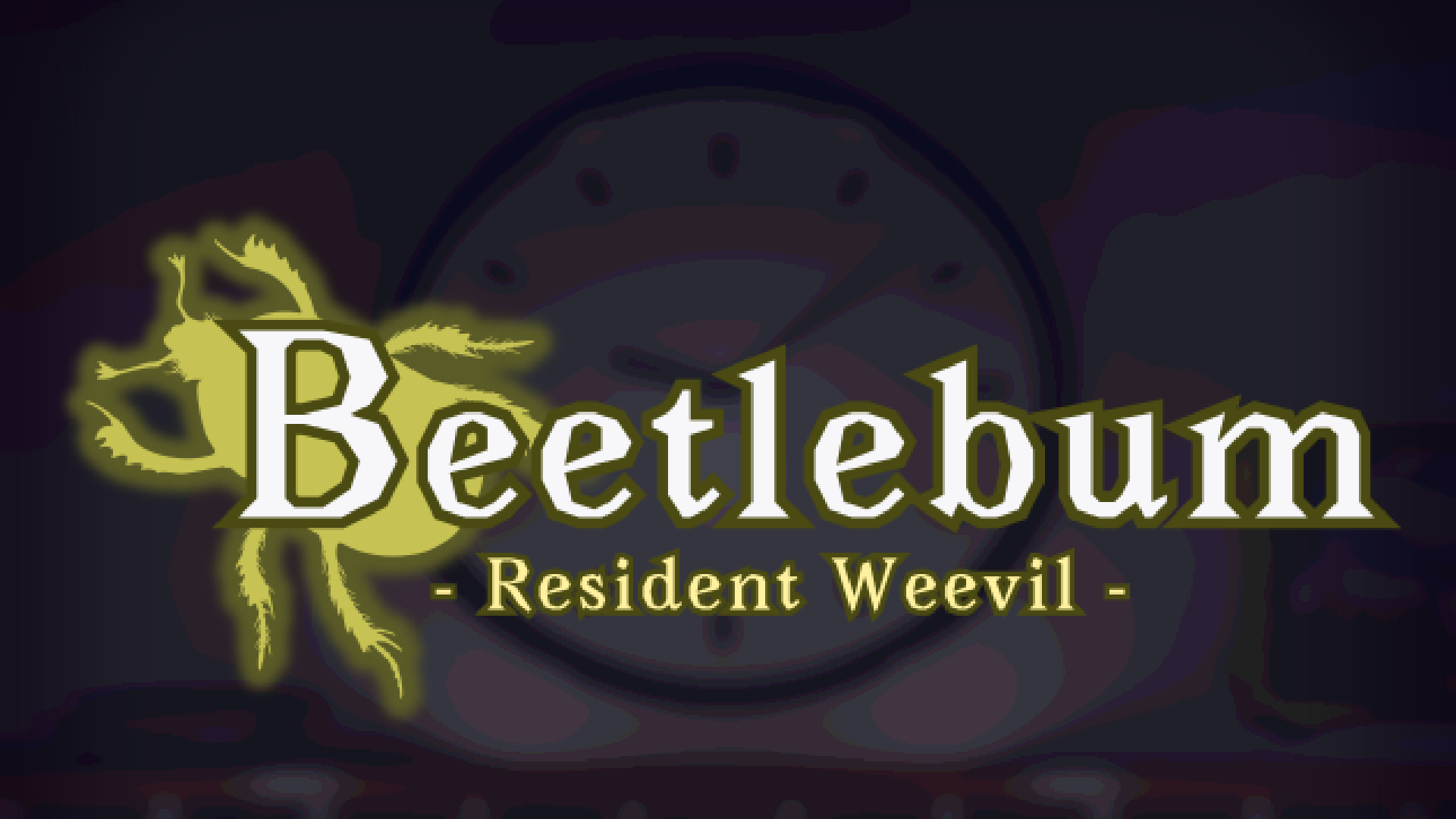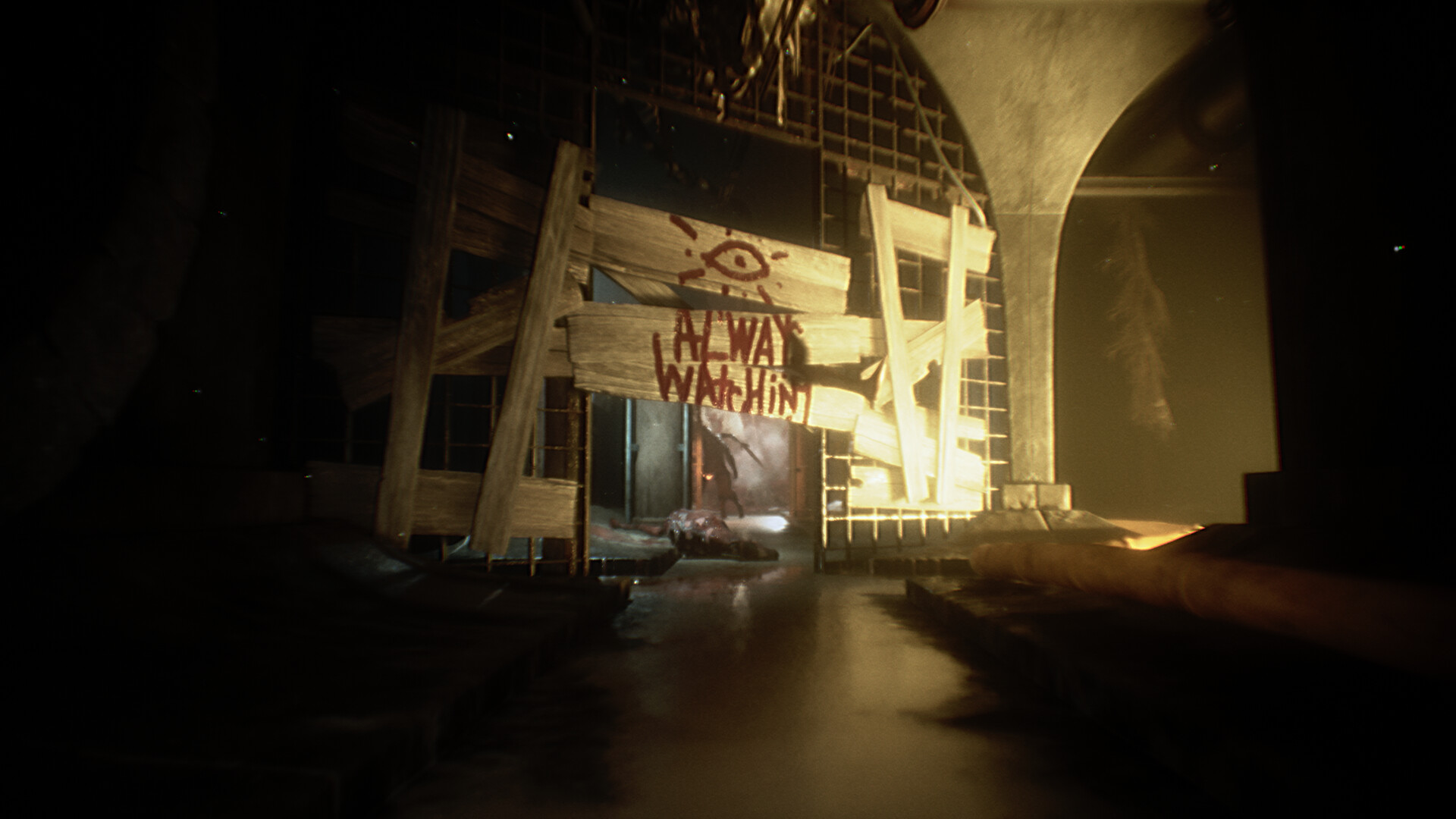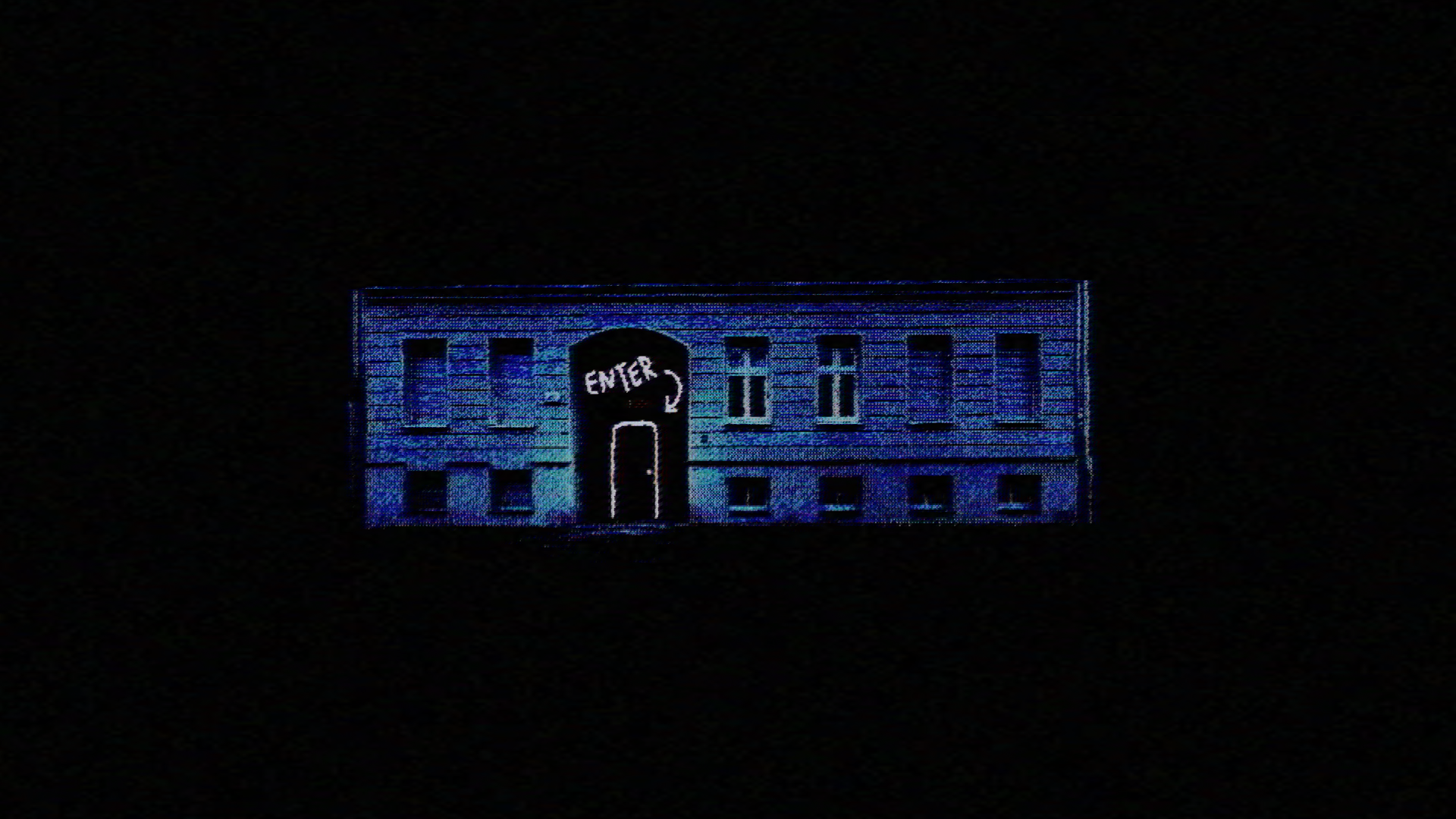
Beetlebum: Resident Weevil dev Callum Mackay talks inspirations and how not to conflate N64 with PS1
What exactly catches my eye when I am looking at indie games? Well it varies, sometimes it is because the gameplay shown is new and inventive, and has me curious to learn more, sometimes it is simply nailing the aesthetic of a title that makes me feel nostalgic, or, in some cases, I stop in my tracks just because I see something insane. As was the case for Beetlebum: Resident Weevil
Now, the dear readers who have been following my journalistic journey so far will be able to tell you that I am in love with traditional survival horror games. Being exposed to Resident Evil at a much-too-young age had left an unshakable impression on me. To this day, even emulating the basics of the genre will get my attention, but with that in mind, I always love to see a dev try something new in the genre. Not every iteration on the genre needs to reinvent it’s core mechanics to bring something new to the table.
In Callum Mackay’s case, it was as simple as eschewing the typical set of ghouls and ghosts that one would typically encounter and instead replacing them with a bevy of bugs. Those with Entomophobia may have a hard time dealing with the cavalcade of creepy crawly critters, but those who power through the mansion of chomping mandibles will find a sincere, albeit short love letter to the survival horror genre.
Curious to learn more, I reached out to Callum to request an interview, to shed some light on the development of this quirky title, as well as learn more about the tips and tricks employed to create a believable 64 bit throwback. Thankfully he agreed to make some time and discuss his work with me, and with the magic of the world-wide-web we were able to get together for a friendly conversation about inspiration, intent, and his immediate goals.
After thanking Callum for making time to speak with me, I opened my line of questioning by asking about his game Beetlebum: Resident Weevil, specifically, I asked if the idea to make the game focus on insect life was the initial spark of inspiration, or if that was something that came about as he worked on a traditional survival horror game?
Callum Mackay: Well, it started out with developing the shaders that I used in it. And as I was developing it, I basically came up with the joke “Oh, it’d be fun to have a little tech demo, we’ve got a beetle coming around.” So it was very name-first with Resident Weevil. And then as it expanded, I thought, no, actually, no, I can be better than this. I don’t have to stand on the shoulders of [Resident Evil]. And then after showing it off, I had a lot of people then make the joke to me. So I thought “Actually no, I want credit for my own joke here, I’m gonna commit to that name.”
When I was playing the game, I could not help but compare the game to Franz Kafka’s The Metamorphosis, a short story about a man who wakes up one day to see he has transformed into a cockroach-like creature. I asked Callum if this was an intentional choice to lean into the comparison, or was it more of a happy accident that his game elicited a similar feeling?
CM: Very happy accident. I’ve not read The Metamorphosis, I only realized the connection, I think about a couple of weeks before the initial release.… I’ll need to read it after, I was familiar with the rough story. But it wasn’t on my mind as I was going through until it got pointed out to me very, very late on.


I followed up by asking if there had been a lot of thought put into the world of the game or if the story took the backseat to getting the gameplay right?
CM: There was, and I expanded on it a lot. It actually came from misunderstanding the song Beetlebum by Blur, I just didn’t get it. I’d heard this song for years, I just didn’t know what it was about, and then I started writing the story, realized I got it wrong, thought “Oh, well, I’ll continue on.” And then I realized I was not going to have the scope to tell that story. So, very much compacted it down. And I don’t know if that exact one will get revisited, but I’ll see where it takes me.
On the topic of the scope of the game, I asked Callum if the current version of the project was labeled demo just to temper expectations for the game or if he had truly planned to build upon that for a full release in the future?
CM: Kind of both, initially I was going to continually work on it. But I decided against that because it was quite an early game I developed, so the codebase is sprawled out and it’s a nightmare to change anything. And from a business standpoint, games like this, unfortunately, aren’t very efficient at scaling their content. So they’re quite expensive to make relative to how much playtime you can extract out of them. And additionally, since it was conceived the amount of similar games, there’s a lot more of them then there were. So to continue, and I would like to continue at some point, I need to go back to the drawing board basically and try and make it stand out even more… I’d have to see where it took me in the moment because initially it was planned to be a lot more surrealist, so you kind of have a little mansion-y the area at the start, which is a bit standard, and then you’d go to a different area, that would feel different. But I’d have to see where it would take me. But the main way I’d want to change it would be mechanically kind of, instead of just the Resident Evil, kind of on a room by room basis, maybe swapped between like the Silent Hill style navigation, and then the Resident Evil style fixed camera for specific rooms or something, just to try and push it out and make it more different.


I am always curious to see what a dev thinks are the key, unmissable components of any given genre, so I asked Callum what he saw as the defining traits of the survival horror genre?
CM: I don’t have a good general answer. But there’s a very specific kind of idea I had going into this, where I wanted to ensure that combat wasn’t necessarily a thing, you kind of commit to and make sure you kill every enemy, but rather, using combat as a tool to help avoid things and then the resource management around that, which actually didn’t play out too well In Beetlebum, I think, because I got a lot of people complain about enemies being too tanky, which is a communication issue, where it’s really hard to communicate, you know, “don’t bother killing the enemy”, just, you know, use your tools and run around them, they get stunned for several seconds when you hit them. But yeah, that was a big thing on my mind, this kind of notion of “how do you present the purpose of combat?” What purpose does it solve? Does it serve as an obstacle to the player? this kind of, “I need to get around it, It’s not something I overcome.” the way I executed it, it wasn’t communicated in a way where everyone got it. Going forward in the future, I’m not sure how I could solve that. Maybe it’s just a case of, you know, in a longer game, you’d get used to it, you kind of pick up what they’re putting down.
I chimed in, noting that it must be difficult to teach these mechanics to the player without it feeling like a forced tutorial.
CM: Actually, on that specific note, there’s a mechanic that was removed, where there’s a specific room, where it tells the player that the enemies don’t die, they respawn. And then after playtesting, that was deemed way too punishing. So then they did die. But I didn’t have time to then go back and change that room, the design of that room. So then there’s just a blatant lie about the mechanics, and it’s confused a lot of people, I’ll watch YouTube playthroughs every now and again, when they’ll get to that room, they’ll really be kind of trying to work out what’s happening with it. And it’s just a simple matter of “oh, it was a tutorial for a mechanic that got cut”, which is a funny story.


One thing I had noticed while learning about Callum was that aside from being an employed developer himself, he also spends his time helping others get the best from their respective projects. On his website he features multiple tools for Godot engine that help the system emulate 64-bit consoles. Curious as to why multiple were needed, I asked Callum what were the differences people need to look out for when emulating an N64 versus a PS1?
CM: Right, the main thing to know when approaching N64 versus PS1 is you need to make your textures as small as they can possibly go. I mean, when developing PS1 style stuff, people tend to go a bit larger than what a PS1 could reasonably churn out, which is fine, because that’s it’s a kind of a UV consideration thing where you don’t actually have to care about your technical limitations. But a big part of the N64 style is just the extreme blurred, very small textures that are stretched out over a really wide space, I think that’s the biggest one. There’s a lot of post-processing stuff as well, that the N64 does versus the PS1. But that’s extremely hard to recreate. And that’s what I’ve attempted to do with those, where it’s kind of anti-aliased in a weird way and kind of blurred in a weird way. That’s hard to recreate because of hardware specifics, like you can’t really just slap a gaussian blur on there because it doesn’t look like the right kind of blur, it looks a bit too smooth. The main thing is just having the textures stretched out as much as possible, ideally, with a shader that recreates the specific way it filters them where… you end up with that kind of iconic ruby pattern, like Zelda Rupee pattern in the textures as it stretches out. Which that’s the one bit that is very easy to recreate in modern game engines with shaders, the filtering style but yeah, it’s mainly down to the textures. That and lighting which is getting a bit more nitpicky, but the lighting thing extends to PS1 style stuff as well, where there’s kind of a reliance on real time lighting. And it’s not to say that those consoles couldn’t do it. But when you take the kind of modern game engine approach to lighting it very quickly breaks that illusion.


Moving on from his personal works both artistic and educational and onto his career as an employed game dev, I asked how it came to be that he was working on Wrought Flesh, and how long he had been a part of the team?
CM: That’s something I started a month ago. I just saw a tweet get shared about “I’m looking for someone to do some post release, or bug fixing optimization.” And on the current contract, I’m also working on helping finish and ship The Garden Path, which is a bit out of style for this kind of thing. It’s like, a pretty gardening sim, also on godot. That was also, I saw a tweet being shared around going “Oh, I need someone to do this, this on this.” So yeah, I just DM them after seeing the tweet.
I commented on how great it was that Twitter helps so many indie game devs connect.
CM: Especially I’ve noticed that with Godot engine a lot because it’s very open source, community driven, things tend to get shared around a lot. Like, very, very easily.
Wrapping up our interview, I asked Callum what was next on the horizon for him, aside from his work supporting both Wrought Flesh and The Garden Path, was there currently anything in the works?
CM: Nothing actively. Previously to starting Wrought Flesh work, I was working on a little Outrun 2 clone, which isn’t really survival horror related, but it was kind of an experiment to see “Can I get this to feel nice?” … trying to work on healthier dev practices and more scalable dev practices. Because you very quickly end up in a big ball of just state-hell where you can’t change anything because everything explodes, it takes a month to even find out what you’re meant to change… And there’s industry specific stuff as well, where a lot of different programming industries will have, like, workflows and practices to help this kind of stuff scale, but for whatever reason, it just hasn’t been adopted in games. And there’s a couple of genuine reasons why but there are also ways to make it work. So yeah, that’s a personal exploration topic for me, which hopefully will help with business things in the future, you know, scalable development.
On that hopeful note for a brighter future for game design, the interview came to an end. I thanked him again for his time and let him resume his work. If you are curious to see what the future looks like for Callum, be sure to follow him on Twitter, and visit his Github Page to get your hands on his useful tools for recreating low-poly games. Of course you can also support him by checking out either Wrought Flesh or the upcoming title The Garden Path.
And as always, if you are fiending for more gossip on the latest and great in ghoulish gaming then head back to DreadXP and read more of our frightful features.




